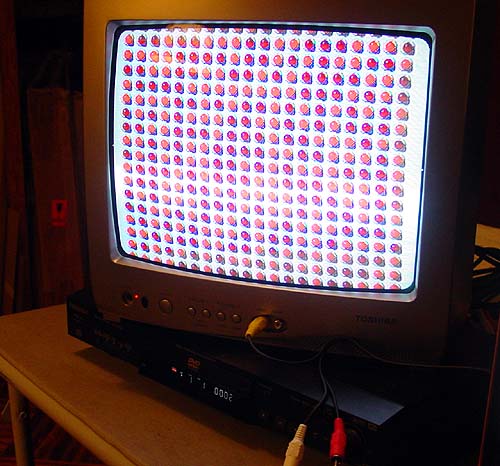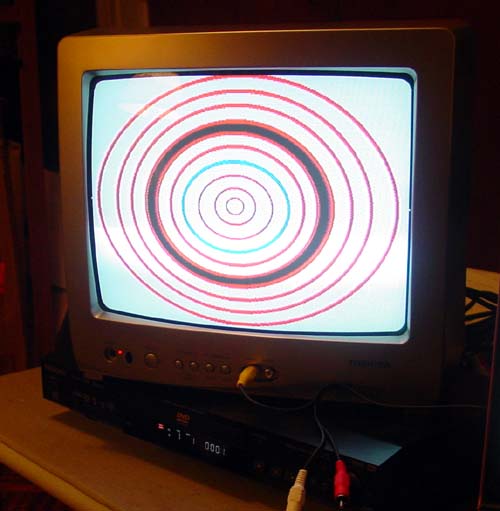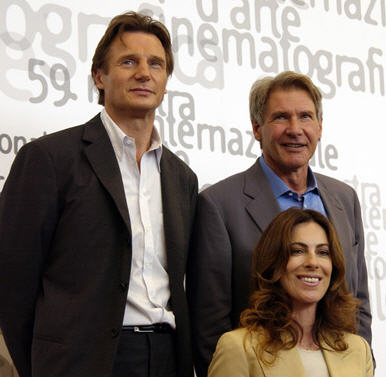View current page
...more recent posts
bitforms vs vertexList Gallery Comparison Chart
(budding computer artists clip and save)
| bitforms | vertexList |
| Chelsea | Williamsburg |
| Occasional good shows of old school computer art | Finger on current scene |
| Owner opened gallery in Korea | Owner directed movie about 8-Bit art |
| Pipeline to MIT Maeda, er, Media Lab | Pipeline to "discourse artists" |
| Slickly packaged work | Lo-fi with aspirations to slickness |
| Mixes different kinds of computer art | Mixes computer and non-computer art |
| No theory to speak of | Theory out the wazoo, but sometimes wrong (thinks I'm a "Modernist") |
| Owner has fashionable eyewear | No eyewear |
| Owner opened gallery in Korea | Still in one location (Four Walls' old space) |
Missed the Rhizome Net Aesthetics 2.0 panel in Chelsea a couple of nights ago because I had to w*rk. Too bad--really wanted to go. MTAA has a report. The distinction between the early vernacular web and the current more "regulated" web laid out in in Olia Lialina's article here serves as a good background for understanding the shift from net art 1.0 to version 2.0. Essentially it's the world of home pages, links, and artist-scientists vs the world of blogs, Google, and fast delivery of every imaginable kind of content (except the gallerygoing kind), with artists, scientists, and artist-scientists struggling to make sense of it. I have also pontificated on it, though not in product release terms. Another distinction I would make is between the anecdotal ('70s conceptualism in web form--what Sally McKay has called "long-loading, find-the-place-to-click-me narratives packed with theoretically correct reference to the body or lack thereof") and the purely experiential (entertainingly transgressive images, music, and video produced in a collaboration-friendly, peer to peer, non-Industry environment; deliberate confusion between professional and amateur [the vernacular thankfully hasn't gone away]; better sound and pictures generally) that broadband and googling makes possible.
Update: Sal Randolph has a report on the panel at Rhizome.org.*
Update, 2011: The Rhizome link has been changed to http://rhizome.org/discuss/view/20235/ (scroll down to Randolph's comment).
Internet

Non-Internet

Internet

Non-Internet
"I like the ones on the Internet better."
"That's not the point--the shots on the bottom are just documentation of pieces that can never be experienced on the web, just as net art always flops in the gallery setting."
But seriously, I'm pretty happy with the DVDs I just burned (these flared-out shots notwithstanding), inspired by Paul Slocum's work for the Dallas show. Picked up that Toshiba TV on clearance for 74 bucks. The LED Grid is an HTML piece--a found GIF remixed to blink at different rates. I used a capture program to convert it to a video file, then burned the file to DVD, which is then set for chapter repeat in the player. For the OptiDisc piece, the same capture program played the original GIF 12 times to make the video, also set on chapter repeat. I like Paul's idea of burning several animations to one DVD and then having several TVs going at once. Now I know how to do it and don't have to bug my friends so much.
 "Technology cannot exist without the potential for accidents. For example, the invention of the locomotive also entailed the invention of the rail disaster. Virilio sees the Accident as a rather negative growth of social positivism and scientific progress. The growth of technology, namely television, separates us directly from the events of real space and real time. We lose wisdom, lose sight of our immediate horizon and resort to the indirect horizon of our dissimulated environment. From this angle, the Accident can be mentally pictured as a sort of 'fractal meteorite' whose impact is prepared in the propitious darkness, a landscape of events concealing future collisions. Even Aristotle claimed that 'there is no science of the accident,' but Virilio disagrees, pointing to the growing credibility of simulators designed to escape the accident -- an industry born from the unholy marriage of post-WW2 science and the military-industrial complex."
"Technology cannot exist without the potential for accidents. For example, the invention of the locomotive also entailed the invention of the rail disaster. Virilio sees the Accident as a rather negative growth of social positivism and scientific progress. The growth of technology, namely television, separates us directly from the events of real space and real time. We lose wisdom, lose sight of our immediate horizon and resort to the indirect horizon of our dissimulated environment. From this angle, the Accident can be mentally pictured as a sort of 'fractal meteorite' whose impact is prepared in the propitious darkness, a landscape of events concealing future collisions. Even Aristotle claimed that 'there is no science of the accident,' but Virilio disagrees, pointing to the growing credibility of simulators designed to escape the accident -- an industry born from the unholy marriage of post-WW2 science and the military-industrial complex." (hat tip to MBM)

Kathryn Bigelow: A Great "Problematizing" American Movie Director
(Near Dark, Strange Days, K-19: The Widowmaker)
1. Her IMDb bio: "A very talented painter, Kathryn spent two years at the San Francisco Art Institute. At 20, she won a scholarship to the Whitney Museum's Independent Study Program. She was given a studio in a former Offtrack Betting building, literally in a vault, where she made art and waited to be criticized by people like Richard Serra, Robert Rauschenberg and Susan Sontag. She later graduated from Columbia's Film School. She was also a member of the British avant-garde cultural group, Art and Language. Kathryn is the only child of the manager of a paint factory and a librarian."
2. Excellent article on K-19: The Widowmaker. In a nutshell, this is the true story of the maiden voyage of the USSR's first nuclear sub with missile launching capability, in the early 60s. The reactor sprang a leak and the ship almost exploded--World War III narrowly avoided. The captain and crew were heroes for saving the ship but Russia hushed it up till the end of the Cold War.
Excellent movie, beautifully, kinetically filmed, as with all of Bigelow's work. Not a big commercial hit, and how could it be? Aside from the presence of bankable stars Harrison Ford and Liam Neeson (the latter way better than the wooden former), it's contrary to every Hollywood formula and enfatuation. All male cast--no submariners' wives back home, crying and clutching hankies. Female director, like, there's about two of those, and as the article above discusses, this was entirely Bigelow's project. She went to Russia, did the research. Doomed ship: People die horrible, pointless deaths because of bureaucratic stupidity. Russian subject matter: the US Navy lent very little assistance, like they do for Top Gun and all that crap, because it wasn't about the great American military.
We've seen a lot of K-19's moves in Das Boot--the "other side of the war," men on boat undermined by civilian leadership back home. The latter very relevant now with our troops getting chewed up in Iraq because of bad leadership by Rumsfeld, Wolfowitz, and Feith. What's unique and very Soviet is the nuclear theme, with its resonance to Chernobyl--the possibility of death and disfiguration from unseen radiation, caused by the negligence of your own side, is much creepier than just running around evading Allied depth charges.
I read somewhere that women, in polls, say they hate movies like Crimson Tide where two men butt heads to see who has the greater authority. Denzel Washington and Gene Hackman basically bicker throughout that entire dreadful film. "Mutiny" is a subplot of K-19, too, but it plays out in a less expected, more anticlimactic way.
When I first saw the work of painter Kara Hammond, she was drawing Precisionist style graphite drawings of old Russian satellites and spaceships. The "other" of Soviet tech piques a fascination of American artists who are forcefed images of our own wonderful gear. K-19 is a (cinematically centripetal, ever-changing) museum of old Russian tech. See paragraph one about Bigelow's background. More needs to be written about the artistic subversives running silent and deep within the Hollywood system.

Image from IMDb. One quibble, and another big reason for the film's lack of box office buzz: the title. "K-19: The Widowmaker" sounds like a combo of some scientifically formulated dog food and a lethal bar drink.
More.
Unicorn Hard-on. "Candy's Song" and "Sugar Mountain"--Throbbing Gristle for Candy Stripers? No-budget Chris and Cosey? Words are elusive. Agonizing over some clipping and distortion a few posts back now seems pointlessly fussy. Thanks, again, Travis.

In August 2003, six months after the US invaded Iraq, I visited Texas and was telling a relative there that I had marched a couple of times in hopes of stopping the war. He gave me a slightly pained, "my crazy east coast kin" look, sighed, and said, "I just have to believe the government has access to information we don't have, and they wouldn't have done it if wasn't the right thing." And he's not even a Republican. Well, D___, this is for you. I was right and you were wrong, and I hope next time I see you you'll admit it.
Powell's Former Chief of Staff Lawrence Wilkerson Calls Pre-War Intelligence a 'Hoax on the American People' Tonight on PBS Program 'NOW'*startling if you've been living in a box since 1999.
NEW YORK, Feb. 3 /PRNewswire/ -- In an interview airing tonight on the PBS weekly newsmagazine NOW, Colin Powell's former Chief of Staff Lawrence Wilkerson makes the startling* claim that much of Powell's landmark speech to the United Nations laying out the Bush Administration's case for the Iraq war was false.
"I participated in a hoax on the American people, the international community, and the United Nations Security Council," says Wilkerson, who helped prepare the address.
The NOW report, which airs days before the third anniversary of Powell's speech, examines the serious doubts that existed about the key evidence being used by the American government at the very time Powell's speech was being planned and delivered.
"I recall vividly the Secretary of State walking into my office," Wilkerson tells NOW. "He said: 'I wonder what will happen if we put half a million troops on the ground in Iraq and comb the country from one end to the other and don't find a single weapon of mass destruction?'" In fact, no weapons of mass destruction were found in Iraq.
